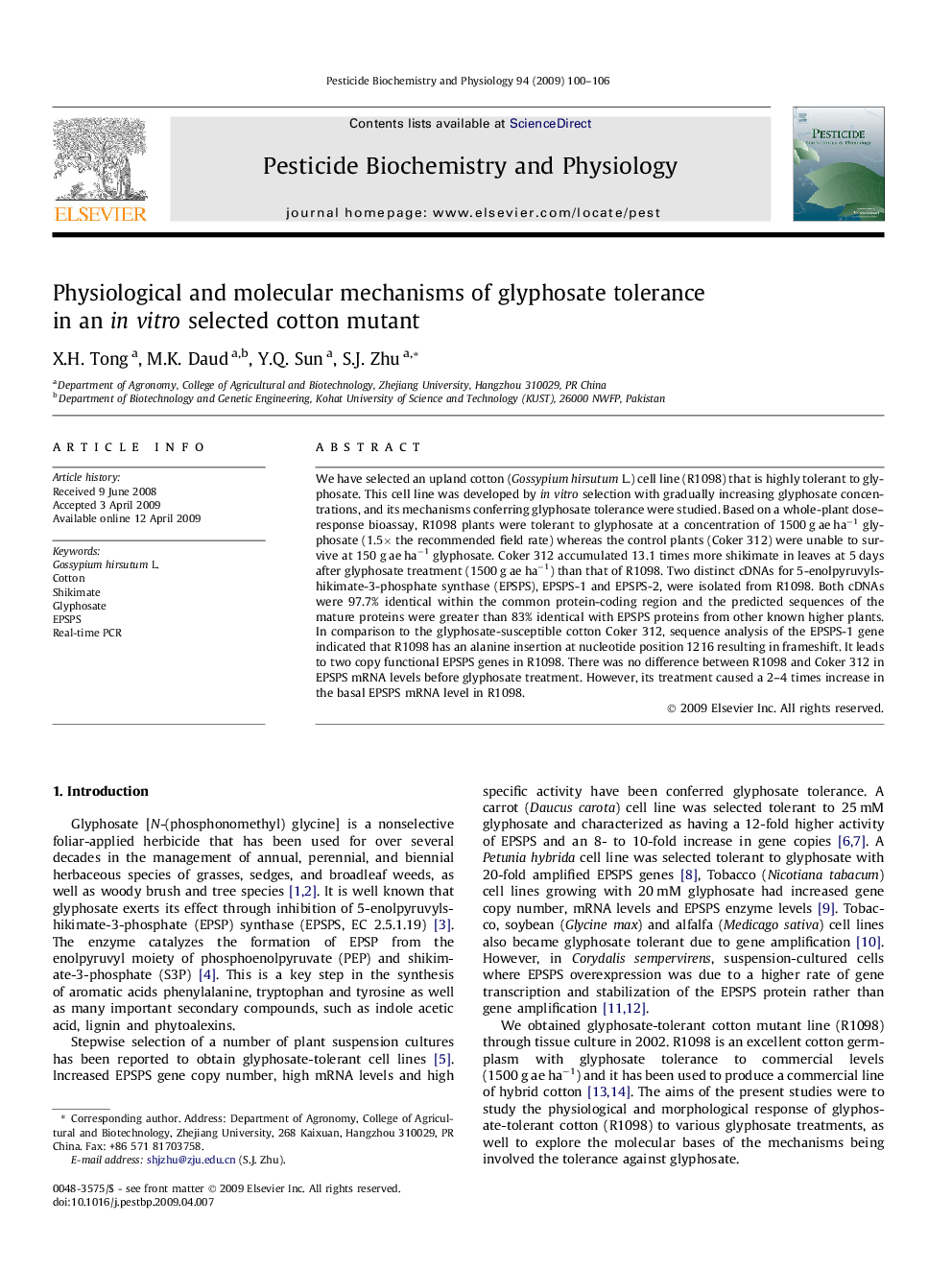| Article ID | Journal | Published Year | Pages | File Type |
|---|---|---|---|---|
| 2009807 | Pesticide Biochemistry and Physiology | 2009 | 7 Pages |
We have selected an upland cotton (Gossypium hirsutum L.) cell line (R1098) that is highly tolerant to glyphosate. This cell line was developed by in vitro selection with gradually increasing glyphosate concentrations, and its mechanisms conferring glyphosate tolerance were studied. Based on a whole-plant dose–response bioassay, R1098 plants were tolerant to glyphosate at a concentration of 1500 g ae ha−1 glyphosate (1.5× the recommended field rate) whereas the control plants (Coker 312) were unable to survive at 150 g ae ha−1 glyphosate. Coker 312 accumulated 13.1 times more shikimate in leaves at 5 days after glyphosate treatment (1500 g ae ha−1) than that of R1098. Two distinct cDNAs for 5-enolpyruvylshikimate-3-phosphate synthase (EPSPS), EPSPS-1 and EPSPS-2, were isolated from R1098. Both cDNAs were 97.7% identical within the common protein-coding region and the predicted sequences of the mature proteins were greater than 83% identical with EPSPS proteins from other known higher plants. In comparison to the glyphosate-susceptible cotton Coker 312, sequence analysis of the EPSPS-1 gene indicated that R1098 has an alanine insertion at nucleotide position 1216 resulting in frameshift. It leads to two copy functional EPSPS genes in R1098. There was no difference between R1098 and Coker 312 in EPSPS mRNA levels before glyphosate treatment. However, its treatment caused a 2–4 times increase in the basal EPSPS mRNA level in R1098.
